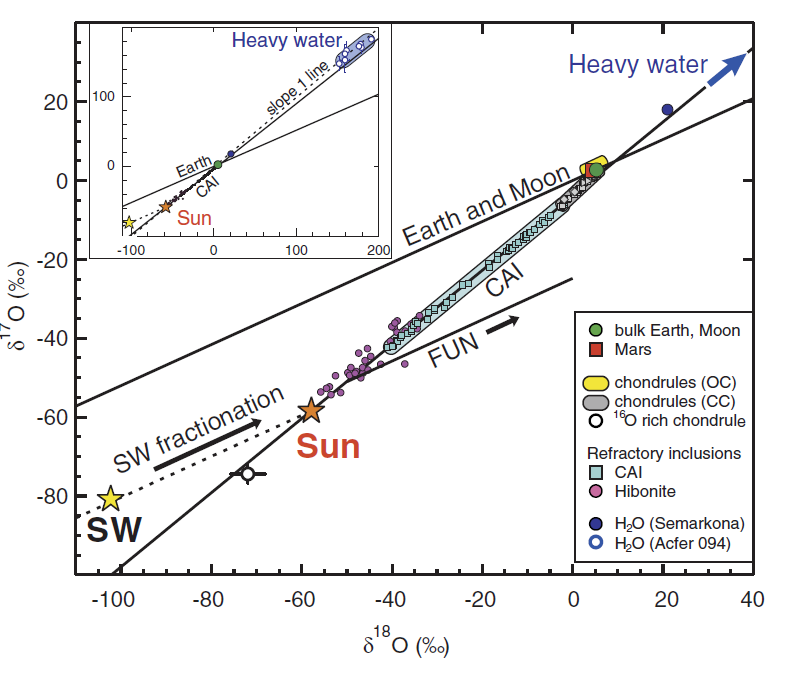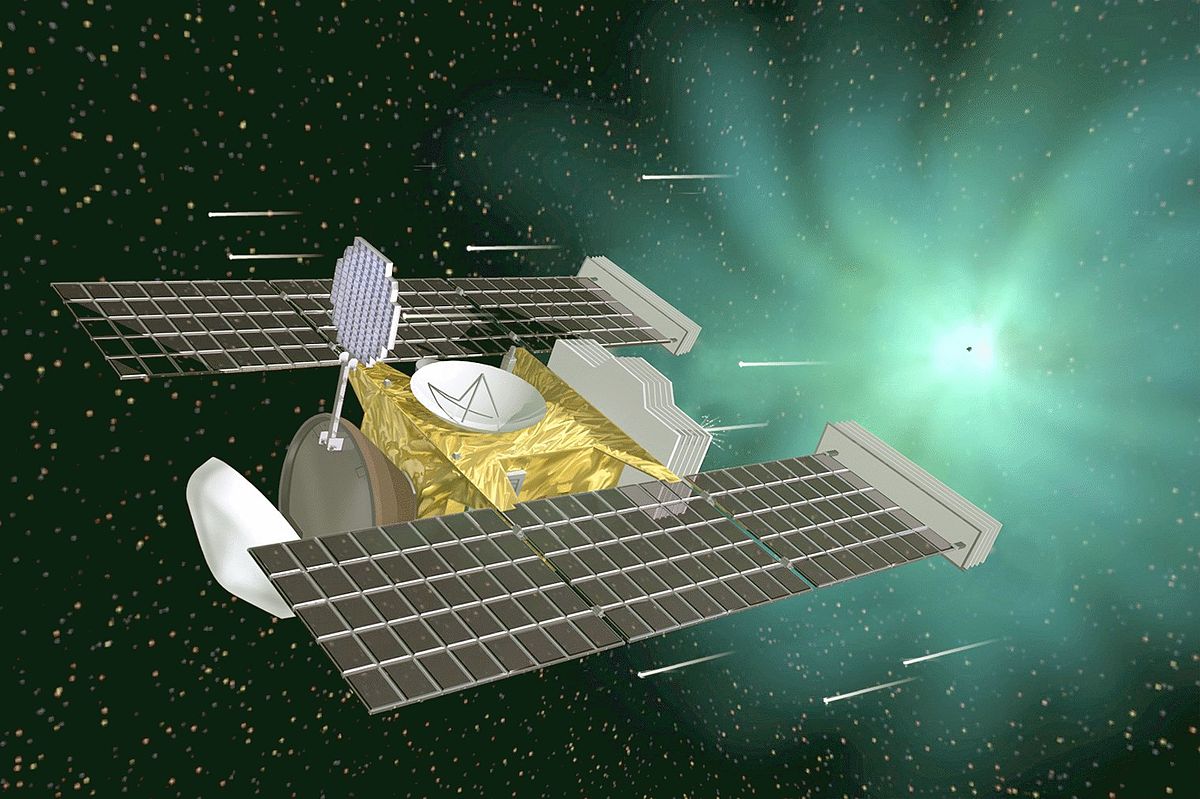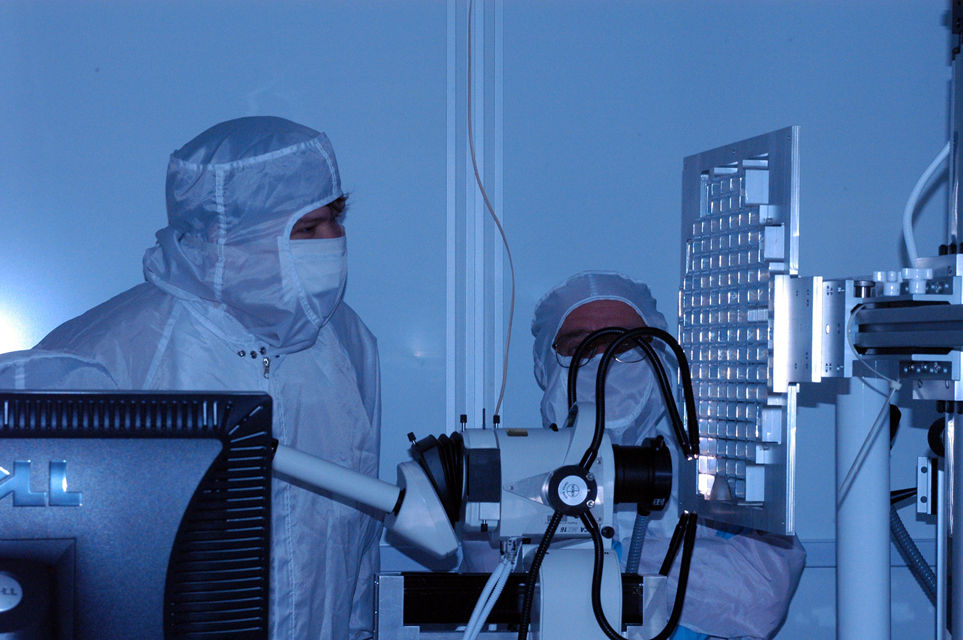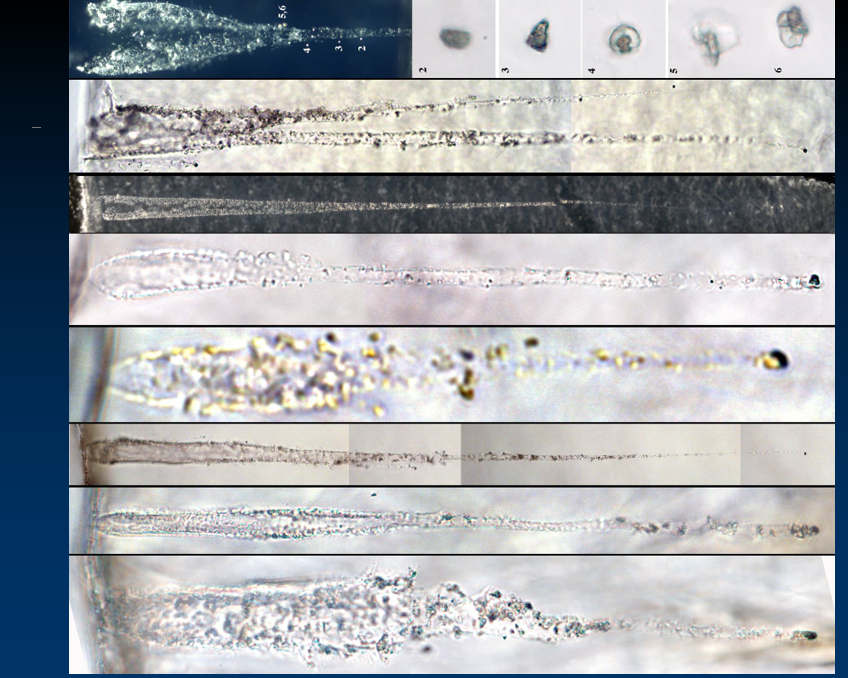Other missions I’ve been involved in include GENESIS, which brought atoms of the solar wind back to Earth embedded in high-purity substrates. GENESIS had an inglorious return, crashing in the Utah desert, but ended up meeting all its top-level science goals
The most important science result of Genesis was the determination that the Sun is rich in Oxygen-16 compared to all the planets. To make this measurement, Kevin McKeegan and colleagues at @UCLA designed and built a special mass spectrometer called the MegaSIMS.
A really exciting and fun mission I was deeply involved with was STARDUST, which flew through the tail of comet Wild-2 in 2004 and returned some of its dust to Earth in 2006.
The collector was array of “aerogel” -an amazing low-density silica material. A particle hitting front of collector @ 6 km/s stops in few 100 microns w’out being destroyed since the kinetic energy goes into melting the gel. Here’s me with the STARDUST collector soon after return.
A few really interesting things that STARDUST found were that this comet, which formed in the far distant cold reaches of the solar system includes grains that formed much closer to the Sun, like this Calcium- Aluminum-rich inclusion and chondrule fragment and …
that this comet contains organic matter rather similar to that seen in meteorites and IDPs, including isotopically anomalous “nanoglobules” (tiny hollow balls of C)
Another cool thing about STARDUST: while en route to Wild-2, it also opened up 1 side of collector to collect present-day interstellar dust entering the Solar System.
Finding the particles (which are smaller & faster than the comet dust) proved to be a herculean task that was made possible by a citizen science project (Stardust@home) spearheaded by Andrew Westphal (Berkeley) and a large collaboration of scientists. http://stardustathome.ssl.berkeley.edu/ ">https://stardustathome.ssl.berkeley.edu/">...
We ended up finding evidence for 7 interstellar particles, analyzed by a whole slew of techniques and published in Science ( https://science.sciencemag.org/content/345/6198/786">https://science.sciencemag.org/content/3... ) in 2014 https://www.planetary.org/blogs/bruce-betts/20140815-Stardust-home-dust-found.html">https://www.planetary.org/blogs/bru...
All in all a fun mission, and there is still tons to do with the samples, but I hope within my career we bring samples back from the nucleus of a comet!

 Read on Twitter
Read on Twitter










